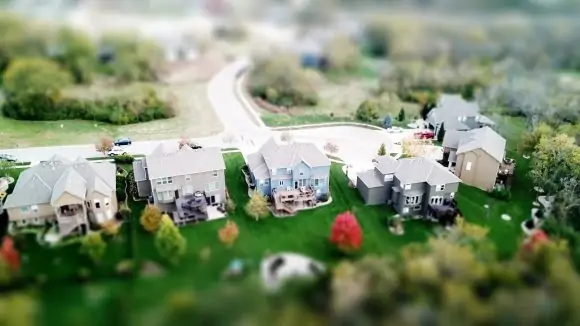
Neighborhoods change over time. Perhaps, the neighborhood you grew up in is experiencing more break-ins than ever. As suburbs grow, it becomes easier for criminal elements to blend in. Plus, as the population increases, infrastructure and patrol coverage often fall behind. Additionally, residents who assume they live in a safe area are often complacent. Here are 8 suburbs long considered “safe” but which have recently seen significant crime increases, often quietly, with little fanfare.
1. The Rapid-Growth Suburb
Even a once a sleepy town can be rattled by a population boom. It can come with increased theft, vandalism, and even violent incidents. New residents, overburdened police forces, and underdeveloped infrastructure can create the perfect storm. If your neighborhood is growing, keep an eye on crime reports and stay vigilant.
2. The Wealthy Enclave
Affluent neighborhoods with little security became prime targets for organized burglary rings. These residents, who used to leave doors unlocked and packages unattended, are now thinking twice. Many of the rich and famous, including Patrick Mahomes and Travis Kelce, have been victims of home break-ins. As a result, many wealthy individuals have increased security.
3. The Commuter Community
Close to major cities, commuter suburbs are popular with professionals and young families. But as urban crime spills outward, these areas experience a spike in property crimes, car break-ins, and porch thefts. Public transit to commuter cities also makes them more accessible to criminals. Many of these communities have implemented neighborhood watch programs to combat crime in their area.
4. The Award-Winning Town
Even places once ranked among the “safest in America” aren’t immune. A lack of recent investment in public safety can leave these towns vulnerable to emerging threats. Just because a town was once safe doesn’t mean that it always will be. Partnership between law enforcement and residents is crucial to keep towns safe.
5. The Historic Neighborhood
Charming, walkable, and filled with character, some historic neighborhoods have seen a sharp rise in robberies and assaults. This is particularly true during evening hours. Since historic places normally attract more tourists, residents have to be aware of their surroundings. While the charm remains, the safety profile of these areas can shift, requiring extra vigilance from both new and seasoned residents.
6. The Gentrified Suburb
Formerly industrial and now trendy, these areas have attracted new residents and businesses. But rising income gaps and limited community support systems sometimes lead to social tension and an uptick in crime. Despite new development and amenities, these suburbs can struggle with maintaining a cohesive, safe environment for everyone.
7. The Overlooked Edge Town
Not quite rural, not quite urban, these suburbs can get ignored in crime reports. But behind the scenes, data can show rising incidents of domestic violence, drug-related crimes, and petty theft. With fewer police patrols and limited public resources, crime can go unchecked for longer periods. Residents may not realize the risks until they experience or witness an incident firsthand.
8. The Vacation-Friendly Community
With beautiful homes and seasonal visitors, this area draws attention from opportunistic criminals who know many properties sit empty for weeks at a time. Burglars often target these homes during off-peak seasons, knowing they’re less likely to be monitored. Short-term rentals can also invite transient activity, making it harder for neighbors to recognize suspicious behavior. While the scenery is stunning, the lack of consistent presence can make security a major concern.
What to Watch For and How You Should Respond
If you want to stay safe, there are several things you can do. First, review local trend data from the FBI or police blotters. You can then look for upticks in burglary, auto theft, or violent crimes. Always protect yourself, even in safe areas, by locking your doors and windows and installing security systems and cameras. If your area is seeing an increase in crime, advocate for community watch groups, updated policing plans, or increased patrolling. You never want to assume that just because an area was once deemed safe, that it still is.
Even in suburbs once deemed safest, crime is quietly creeping upward. The eight areas above represent a mix of rapid-growth locales and historically affluent communities facing new threats. Staying vigilant means understanding current data, ratcheting up household security, and engaging local leadership.
Read More
5 Financial Habits That Make It Harder to Say “No” to Adult Kids
10 Dog Breeds That Often Outlive Their Owners’ Expectations

Teri Monroe started her career in communications working for local government and nonprofits. Today, she is a freelance finance and lifestyle writer and small business owner. In her spare time, she loves golfing with her husband, taking her dog Milo on long walks, and playing pickleball with friends.

